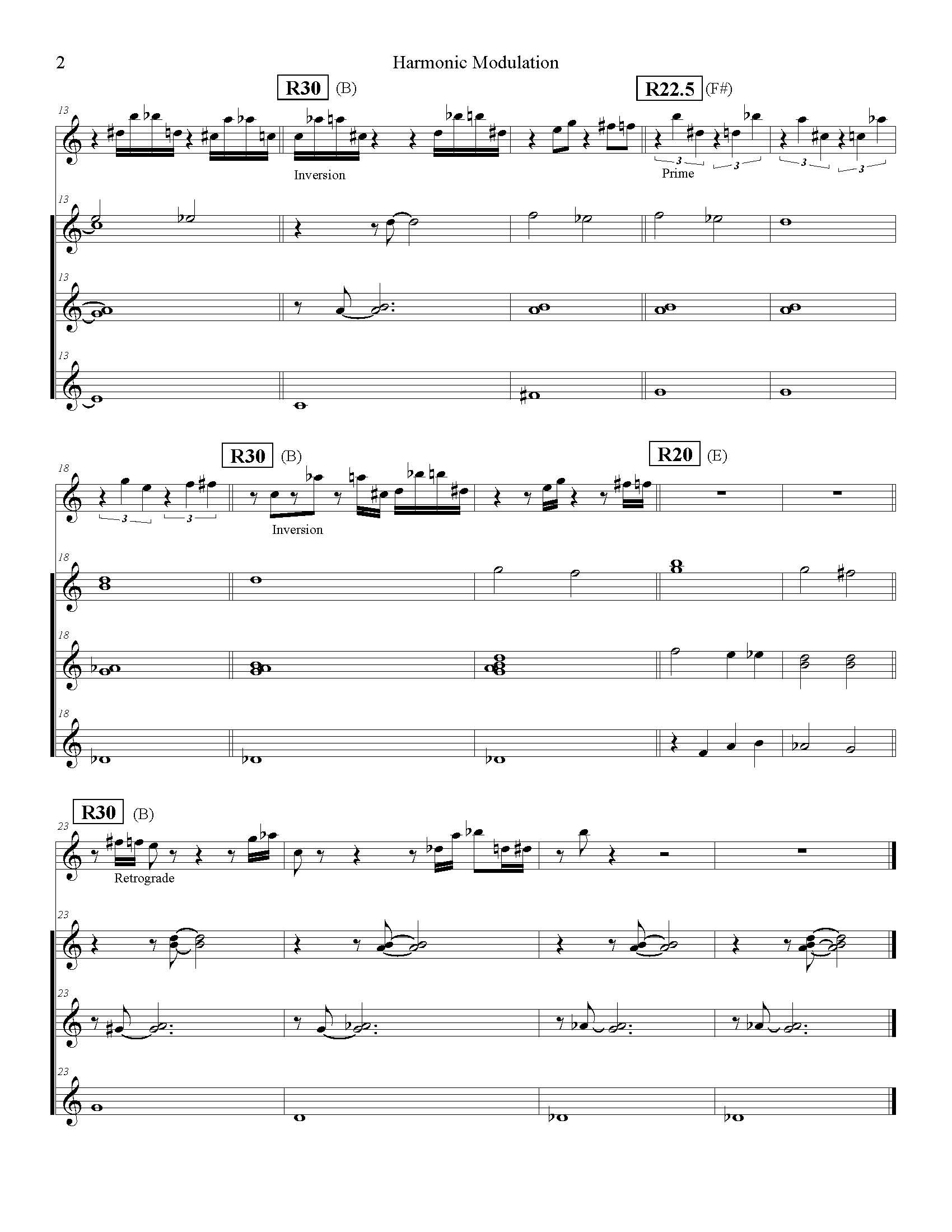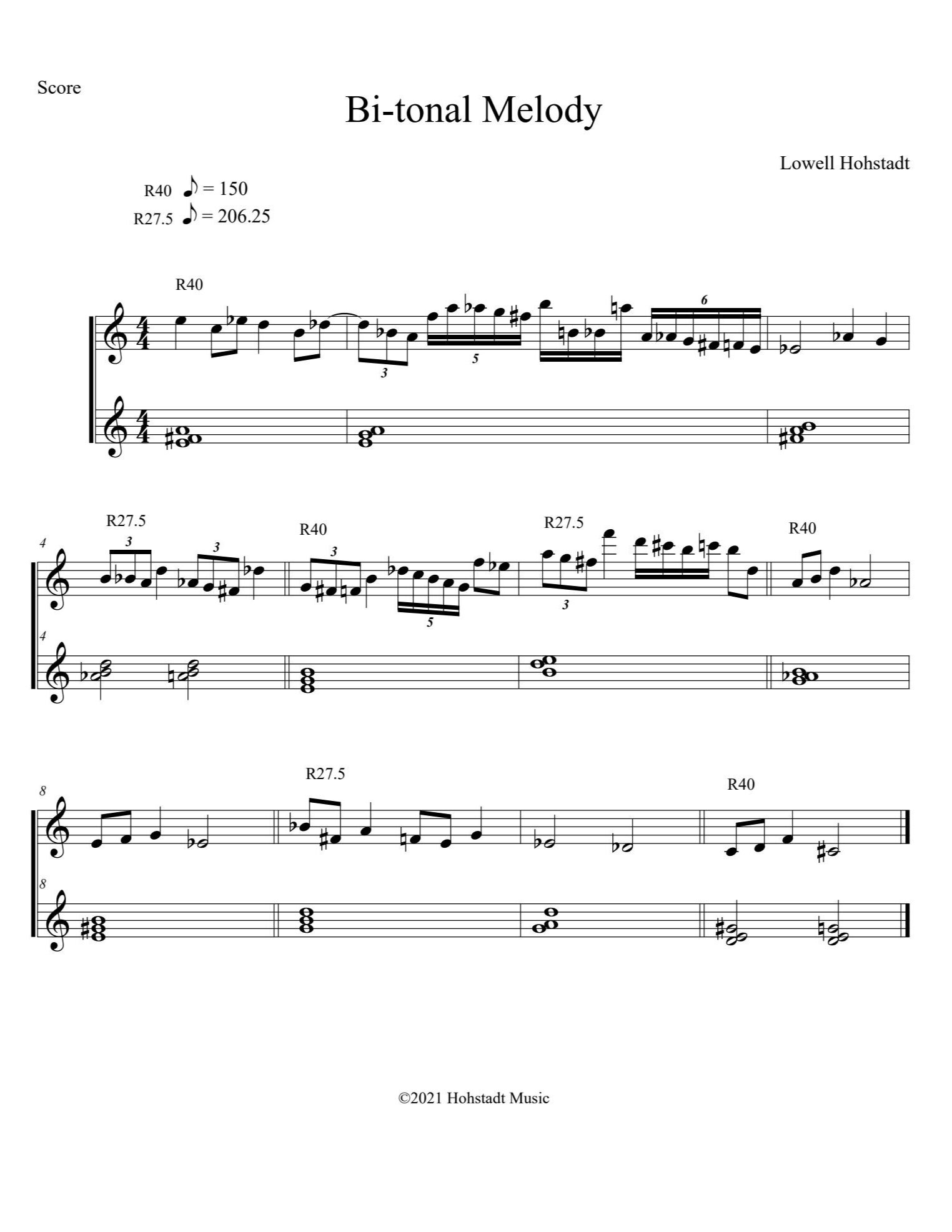Microtonal Scaler - Microtonal 2
Microtonal 2
In this experiment I used the same ascending and descending scaler pattern in multiple related overtone scales. In each 30-node scale, I used the upper partials to create the microtonality.
In the R5 family, I used R5, R10, R20, R40, R80, and R120 in 75BPM and 150BPM, from their respective tempo family. The root tempo of this family is whole-note = 18.75 (.3125Hz).
In a related branch from that group, I used R30 in 112.5BPM and 225BPM, its respective tempo family. This family is derived by multiplying the above 18.75 x 3.
I also used R35 and R70, another branch from the R5 family in 131.25BPM, its tempo family. This family is derived by multiplying the above 18.75 x 7.
I hoped to create a ‘whirring’ of scales against each other, all related, yet in their own distinct families, like branches off the trunk of a tree.
Polyrhythms and polytonalities are created by the scaler interactions.
(For more information, please see my article Integrated Frequency)







